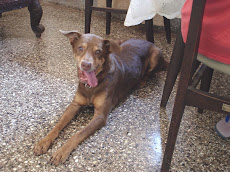Like most people living outside Divar, I have in the past chosen to attend the Piedade Bonderam with all its vibrant colour and chaos and sizeable float parade. The entire exercise of crossing in the ferry to the island, attending the festival and crossing back to the mainland in that rusty old ferry was not to be repeated in a hurry. So the smaller Malar Bonderam was generally missed. This year I missed the Piedade Bonderam and decided to make it to the Malar Bonderam instead. I make good decisions and bad decisions. Going to the Malar Bonderam was a good decision. I learned many things.
That big need not necessarily be better and that though the Piedade Bonderam was really great fun, the Malar Bonderam stirred me in a strange way. We talk about our culture fast disappearing, our cuisine falling into disuse, the Goan way of life going, going, gone, but except for some tokenism, we do nothing much about it.
The Malar Bonderam was small and very well organized. The fancy dress participants really took pains. In fact one ‘male bangle seller’ was made up so well and was so authentic in costume and props, that I was shocked to find out that not only was the bangle seller not male; she was an old friend who works in the Mamlatdar’s office and I did not recognize her. The coconut breaking contest saw two women smashing the coconuts comprehensively, while most of the men missed the target completely and everyone cheered madly. The floats were few but excellent. The flags snapped in the island breeze and all through the festival Konkani music played. Good, foot tapping, Konkani music with its mixed Latino, calypso, reggae, pop rhythm. The last Fontainhas float played Portuguese Music and the Afro float African music. The Quepem dance troupe danced their hearts out. The food was Goan and one stall sold wine.
There were no sponsored floats. There was no English music during the parade, and no Hindi music. Just a vigorous celebration of the ancient rhythms of Goa. This was possible because the Government of Goa had no hand in the festival which was funded and organized by the people of Malar themselves. Churchill Alemao spoke of how elsewhere in Goa he sees 90 percent non-Goans, but here in Malar he could see 90 percent Goans.
Of course when speaking to Divadkars two subjects were discussed threadbare ¬– the ancient rivalry between Piedade and Malar and how 50 percent of the people wanted a bridge and 50 percent did not want a bridge. We all agreed that a bridge would turn Divar into a Panaji or a Taleigao and that the inconvenience of waiting for a ferry was nothing compared with the flood of builders who cut the island up into large, medium and small plots for people from all over the country and world to set up holiday and retirement homes, people who find our ways strange and seek to smother our culture with their own. Where those magnificent old mansions would be torn down and ugly apartment blocks with tiny ugly balconies and no sewage systems or garbage disposal system will ram the final nail of the coffin home.
As if to underline our discussion, a family of Indian tourists, man, woman and child were also waiting for the ferry back to the mainland after the parade was over. The woman asked if there was a bridge and I said there was no bridge. “There is only this ferry to go across?” she asked shocked. Expecting her to ask what the people would do in a medical emergency, another man told her that the ferry is always there and can be used in an emergency. But that was not troubling the Indian tourist. She asked a question which made me snap, “That’s why the people of this island don’t want a bridge; because outsiders will destroy Divar the way they are destroying the rest of Goa.”
It was unpardonably rude of me, but her question which got me so mad was this: “But how will you bring construction materials here?”
Sunday, September 7, 2008
Subscribe to:
Post Comments (Atom)



No comments:
Post a Comment